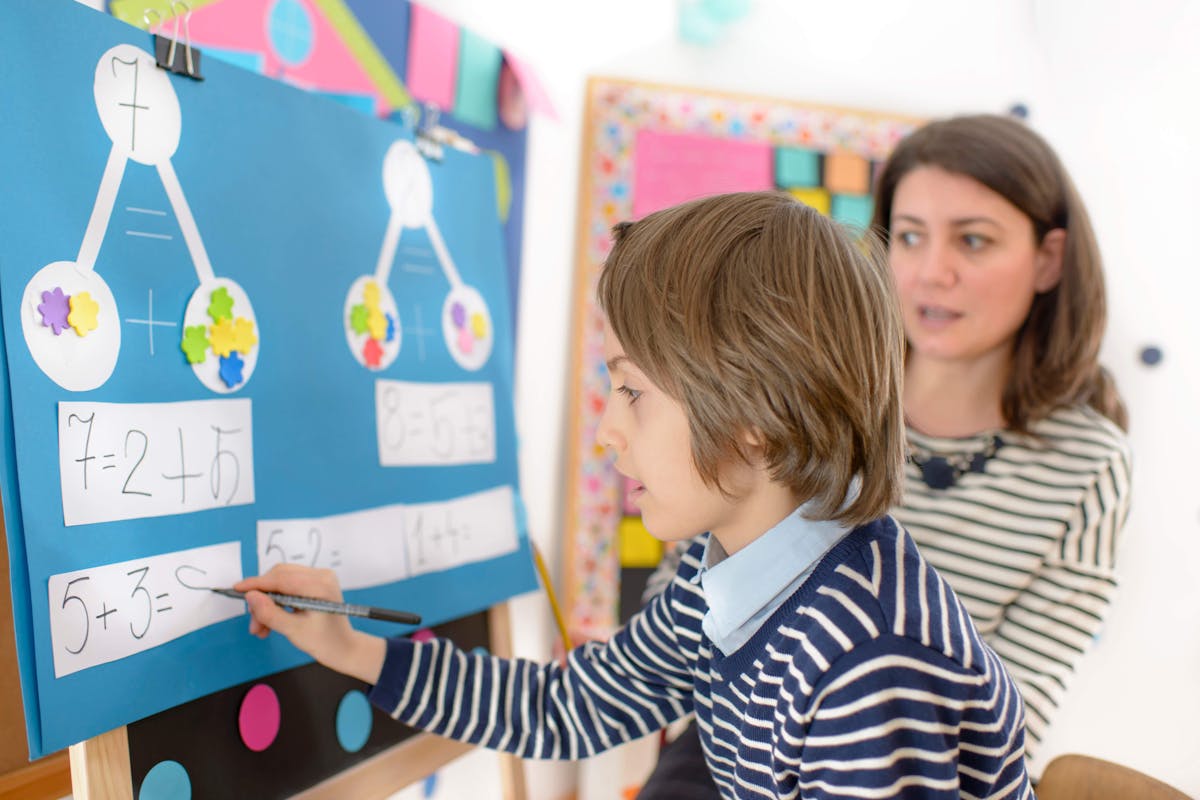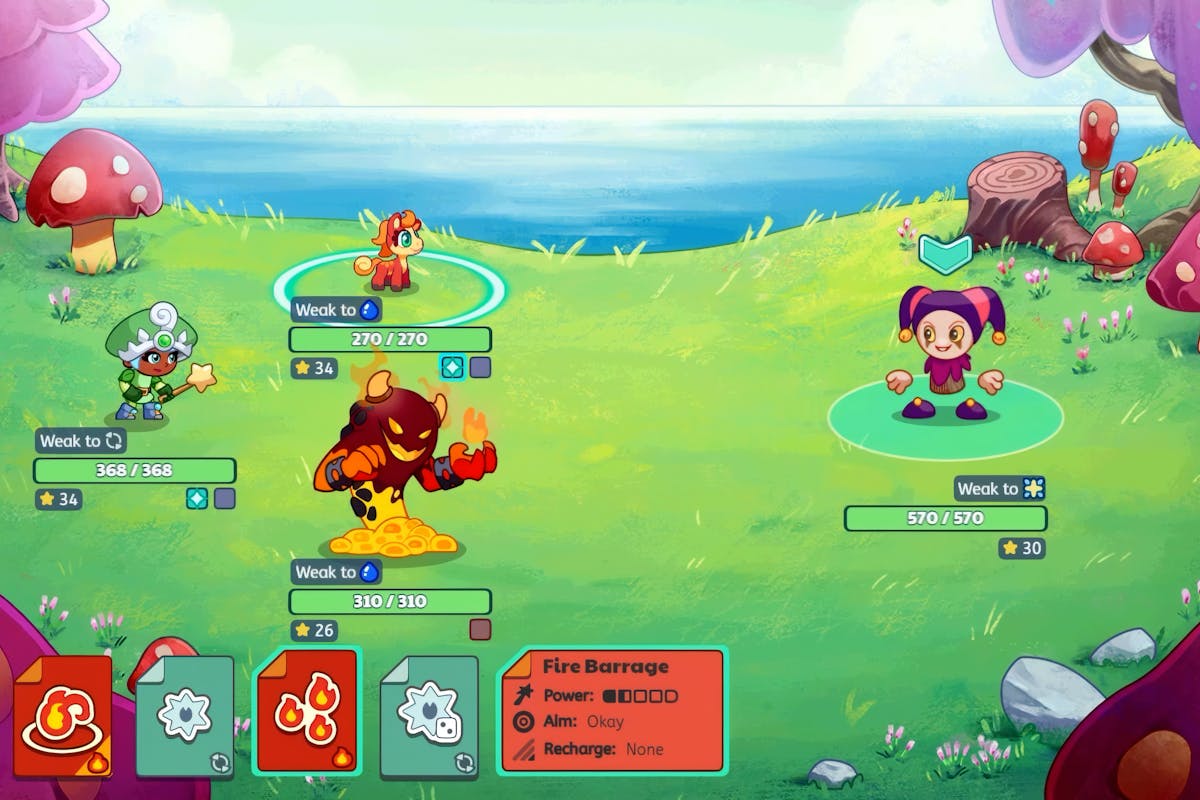Examples of Math Problems for 3rd Grade Teachers

As adults, many of us chuckle when reading elementary math problems because the idea of Charlie having 87 watermelons paints a funny mental picture.
But for many students, word math problems can be overwhelming. This is largely because word problems require different skills than traditional math problems.
And not all children have developed the cognitive and communication skills necessary to solve word problems.
So, if we know that this is a challenging area for our students, what can we do to help them?
This article will look at students' common problems when solving word math problems and what teachers can do to help them. It will also offer you tips on how to effectively deliver word problems based on topics you are likely teaching about in third-grade math class.
Solving Word Math Problems
By the end of 3rd grade, students are expected to be able to solve word math problems using addition, subtraction, multiplication, and division (four operators).
Throughout the year, they also learn how to solve two-step problems. This type of problem is one where students will need to solve the first part of the equation and then plug that answer into the second part.
The other main skill that third graders learn is how to use graphs. Students will be tasked with reading graphs, making their own graphs and using graphs to solve word problems.
Changing standards and curriculums can make it difficult to keep up with exactly what children should be learning and when. If you want to better understand where your students should be at, check out Komodo Math’s article or Great School’s article on third-grade math skills.
Let’s go over some examples of these skills to better understand what our students should be learning in the classroom.

1. Two-Step Problem Example
Let’s start with a division word problem to see an example of a two-step problem.
Amanda has a jar with 8 chocolate chip cookies and 7 oatmeal cookies. She can only share 3 cookies with each of her friends. How many friends does Amanda have?
Step one is finding out how many cookies Amanda has. To get this answer, 3rd-grade students would need to add together 8 cookies plus 7 cookies. 8+7=15.
Then step two is dividing the number of cookies between her friends.
15 ÷ 3 = 5. With this equation, the number of people who can be served is determined. Amanda has five friends.
2. Using three operators: Multiplication, Addition, and Subtraction
Not only do students need to know how to use different types of operators, they also need to be able to decide which operations to use when. Multi-step word problems require this extra layer of thinking. Here is an example.
Sarah bought four bags of oranges at the store. There were 8 oranges in each bag. Sarah ate two oranges after giving three oranges to her friend. How many oranges does Jenny have now?
To find the answer, the word problem must be done in two steps:
Step 1: The number of bags (4) is multiplied by the number of oranges (8) to find the total number of oranges.
4x8 = 32 oranges
Step 2: Subtract the oranges Sarah gave her friend (3) and how many she ate (2) from the total of oranges (32).
32-3-2= 27 oranges.
Sarah has 27 oranges now.
3. Focusing on individual math skills: Time word problems
Understanding time, how it works and how to apply math skills to it, is an essential skill. But it can be one that requires quite a bit of practice to master. Let’s look at an example of a time word problem.
Eddie started cleaning his room at 8:43 am. If he finally finished at 9:32 am, how long did Eddie spend cleaning his room?
Students first need to understand that there are 60 minutes in 1 hour. Then, they can take 60 minus 43 and add the total to 32 to get the total number of minutes.
60 - 43 = 17
17 + 32 = 49.
Eddie spent 49 minutes cleaning his room.
4. Word problems with tricky wording: Subtraction vs. Addition
With some word problems, the math skill itself isn’t the tricky part. The difficult part is figuring out what the words in the word problem are trying to tell you. Here’s an example.
There were 353 people attending a baseball game after 31 people left. How many people were at the game before the people left?
In this problem, students need to understand that the math skill this problem is looking to test is addition - not subtraction. Students can add 31 + 353 to get the total number of attendees.
353 + 31 = 384 attendees.
5. Testing different operations: Multiplication Word Problems
Sometimes there are multiple ways to solve math problems, but one way is much easier.
Susie is making cookies for her third-grade class at school. There are 24 students in her class and she made 3 cookies for each person. How many cookies did Susie make in total?
Students need to understand that multiplication is the easiest solution in order to solve this problem. Multiplying 24 x 3 will provide the correct answer.
24 x 3 = 72 cookies total.
Why Students Struggle With Word Math Problems
While 3rd grade math word problems can be challenging, many students make similar mistakes. Understanding where students often stumble will allow you to help your students succeed.

Difficulty Reading and Understanding the Problem
In order to solve word problems, students don’t just need math skills. They also need reading comprehension skills.
If students struggle with reading or can’t understand what the words in the problem mean, they won’t even get to the stage where they can apply what they learned in their math lesson.
Sometimes students can read the problem step-by-step, but the way that it’s worded can seem tricky and confuse students. They may have difficulty mapping out and visualizing the word math problem. We saw this earlier in problem 4 about the baseball game.
Seeing Only the Numbers
Another common issue is students only looking at the digit numbers and don’t fully read the word math problem.
Reading and fully understanding the word problem is essential to knowing what operation to use with the numbers. Students also need to be able to understand what order to do the operations in. These skills are important ones to touch on in your lesson plan.
Problem 6 in this article gives another example of how students need to be able to use the words in a word problem to decide on steps and operators to use.
Mastering this skill helps students translate word problems into real-world scenarios as they can take numbers and know how to use them to find a solution.
Lacking Math Vocabulary
A lack of math vocabulary can make it difficult for students to understand what the word math problem is asking. It’s so important to lay a foundation of math vocabulary at the beginning of your lesson plan.
If students don’t know which math operation to use, they will arrive at the wrong answer on math word problem worksheets.
Lacking Numerical Language Skills
Students can also face extra challenges if they have a math-related learning disability. These common challenges include:
- Mistakes such as adding or omitting numbers that aren’t originally included in the problems
- Difficulty with abstract concepts like time and direction
- Getting inconsistent results when performing addition, subtraction, multiplication and division skills
- Inability to visualize math problems
- Difficulty remembering math facts, concepts, rules, formulas, rules and procedures
- Inability to memorize math facts
- Difficulty with understanding left and right
- Confusing operations signs or performing them in wrong order
For further reading on how to help students struggling with math skills, check out this article or this article.
How to Help Students Master Math Word Problems
So now that you understand what students may be struggling with, let’s dive into some practical ways to help your students conquer word problems.
The first step is evaluating where your students are at. This can be easy to do with a formative assessment or third grade math worksheets. Then, you can work through the following steps.

Formalize Your Approach
You should have a well-defined strategy when it comes to helping students understand how to solve word math problems. Try creating a system that simplifies word math problems.
Prodigy Math Journey can be an effective tool for you to help students solve word math problems. This game has lots of useful features like the ability to monitor your students’ progress. You can also look at specific skills, like the ability to solve two-step word problems.
It can be very effective at helping students understand how to use various math operations together, like using addition and subtraction or multiplication division.
Make Sure to Read the Entire Word Problem
A simple step that makes a big difference is emphasizing that students should read the entire word problem before attempting to solve it.
Sometimes students have a lack of flexibility in how they think about math word problems. This makes them think that every problem can be solved exactly the same way with the same procedures. However, they need to approach each problem as a new challenge.
Teaching students to read the entire math word problem will give students a better understanding of the problem. And this will give them a better chance of solving it on their own.
Identify and Highlight the Relevant Information
It can also be helpful for you to break the problem down for students. Show them how to focus on the most important parts.
Make sure that your students can recognize the most important numbers and phrases in math problems so they can concentrate on what matters.
Give Them an Equation Without Numbers
Word math problems can be complex for 3rd graders to understand. Sometimes if you can present the word math problem without the numbers, your students may be better able to extract the correct information.
This method can help students understand if the problem is an additional word problem, subtraction word problem, a time word problem or something else. Once the student understands what the problem is asking for, add the numbers back in.
This strategy may be more difficult for first-grade or second-grade students, but third-grade math students are at the appropriate level to grasp word problems without numbers.
Help Them Visualize the Problem
Visuals can be used as an interactive tool that can help students see and understand the problem more fully. Visuals often help students see the real world representation of numbers.
You can use physical objects, drawings and labels to help students visualize the problem and solve the equation. It’s easier to do this with smaller numbers and may be more difficult if students are doing more advanced operations instead of just basic multiplication or division.

Identify and Compare Similar Word Problems
You can also use word problems with similar equations to help students analyze and solve word math problems.
Similarities between problems help students gain confidence. With repetition, learners won’t feel repeated frustration as they keep working on new skills.
Once they feel confident with one type of problem, they will be more excited to tackle new challenges and skills in daily math activities.
Make 3rd Grade Math Fun With Prodigy

Teaching word math problems may feel as daunting to you as it does to you as learning how to do them feels to your students. While there are many challenges, there are also approaches and strategies that can make it easier and more fun for everyone.
If you’re looking for a great program to make the whole process more fun and less stressful, Prodigy is here to help! Prodigy is a game-based learning tool that can help deliver these word problems through gameplay that puts fun at the heart of learning.
In addition to being a fun activity that your students will be excited to do, Prodigy has also been shown to reduce students’ math anxiety and build math confidence. It also aligns with US state standards for 1st-8th grades and automatically adapts to each student.
Ready to get started today? Make a free teacher account here!



